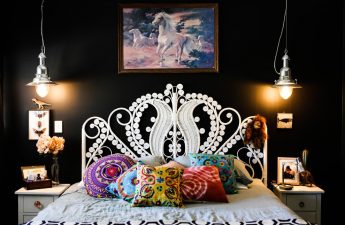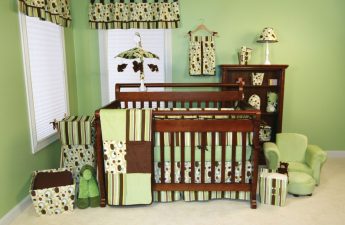Bored with traditional color combinations?Are you finally ready for color experiments and want to liven up your palette in an unconventional way? In this article, we have collected 7 color combinations for every taste that will definitely inspire you. There are a number of classic ones that can be found in interiors of any budget and style. They are tested, safe, universal, and this is their undeniable advantage. But sometimes everyone wants something new (especially if you have been looking at the same beige sofa for five years), and this is where new, fresh and unusual color combinations come to the rescue. We talked to professionals and chose seven combinations that are definitely worth trying in your home.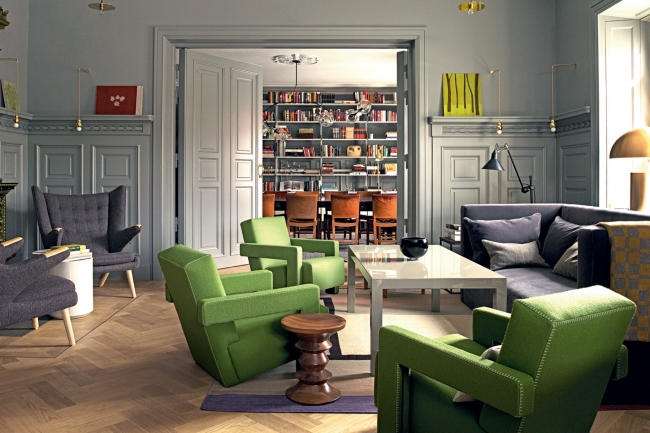 Blue + red Tandem of red and blueyou won't often see it in interiors: because of stereotypes about the incompatibility of cold and warm colors, "ice and fire" are simply afraid to be mixed in the same room. In fact, if you choose the right shades, the risk is almost always justified. In addition, it is not necessary to mix these colors in equal proportions: you can take a neutral blue as a background, and use a cold shade of red for accents.
Blue + red Tandem of red and blueyou won't often see it in interiors: because of stereotypes about the incompatibility of cold and warm colors, "ice and fire" are simply afraid to be mixed in the same room. In fact, if you choose the right shades, the risk is almost always justified. In addition, it is not necessary to mix these colors in equal proportions: you can take a neutral blue as a background, and use a cold shade of red for accents.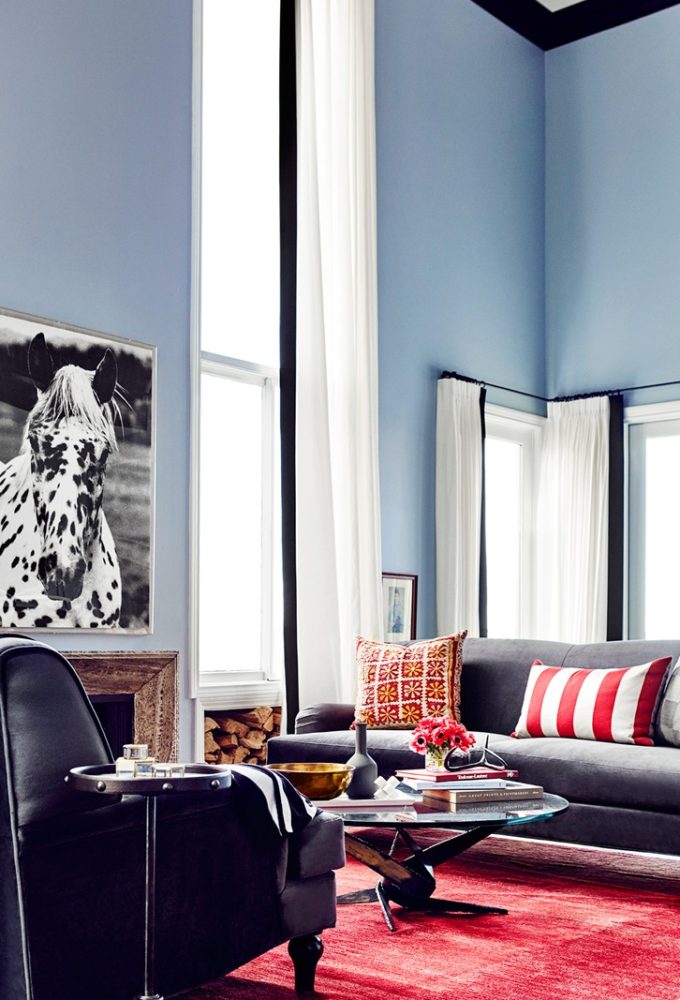 Oksana Tsymbalova, designer:— Blue and red are not the most popular, but a very effective combination. It is rarely used because of the stereotype that you can’t combine warm (red) and cold (blue) colors. But if you want to use traditional styles such as country, retro, marine and others in your home, then the combination of blue and red will “calm” the interior and make it unusual. Advice: when using blue and red for accessories, choose them from the same palette: equally light / dark, muted / glowing, bright / pale, rough / gentle, etc. www.artdomsun.com Lime + blue Bright lime shade is a fresh, dynamic and truly summer combination that will fill the room with colors even on cloudy days. To prevent such a rich color pair from becoming tiring, we recommend using it locally, diluting it with white and any light pastel colors.
Oksana Tsymbalova, designer:— Blue and red are not the most popular, but a very effective combination. It is rarely used because of the stereotype that you can’t combine warm (red) and cold (blue) colors. But if you want to use traditional styles such as country, retro, marine and others in your home, then the combination of blue and red will “calm” the interior and make it unusual. Advice: when using blue and red for accessories, choose them from the same palette: equally light / dark, muted / glowing, bright / pale, rough / gentle, etc. www.artdomsun.com Lime + blue Bright lime shade is a fresh, dynamic and truly summer combination that will fill the room with colors even on cloudy days. To prevent such a rich color pair from becoming tiring, we recommend using it locally, diluting it with white and any light pastel colors.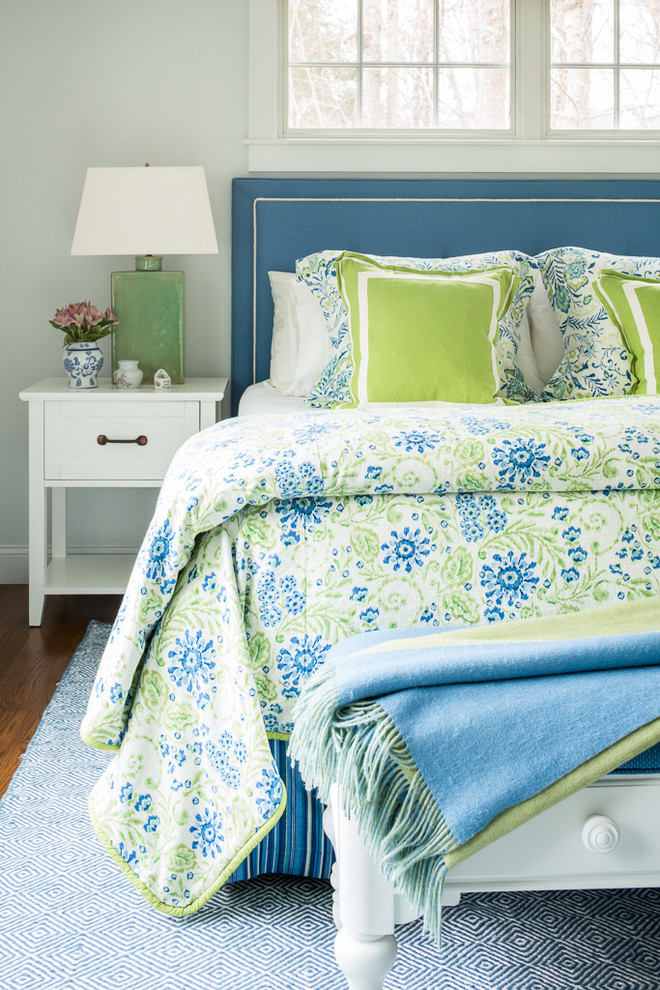 Anton Elistratov, Manders:— Blue, like light blue, is the richest of colours and historically the most expensive to produce. In painting, blue was used to depict the clothes of royal families, dignitaries and religious figures and still has a touch of luxury and hypnotic charm. The combination with lime debunks the myth that blue is an exclusively cold colour. In fact, it has a very rich spectrum of tones: from rich indigo to calm linen shades. For example, the English brand Little Greene has a whole palette of blue paints called Blue. The palette also includes a unique shade called Ultra Blue, released in a limited edition, whose pigment paint is mixed by hand at the Little Greene factory. Gray + black + white There is nothing more classic than a black and white combination, so what is it doing in our selection? Oddly enough, it is often considered too formal and cold for living spaces. That is why we suggest diluting the black and white range and adding volume to the interior using shades of gray. Some may find this palette boring, but European interiors convincingly prove every time that this is not the case. A variety of textures, interesting decor and live plants will enliven the monochrome range.
Anton Elistratov, Manders:— Blue, like light blue, is the richest of colours and historically the most expensive to produce. In painting, blue was used to depict the clothes of royal families, dignitaries and religious figures and still has a touch of luxury and hypnotic charm. The combination with lime debunks the myth that blue is an exclusively cold colour. In fact, it has a very rich spectrum of tones: from rich indigo to calm linen shades. For example, the English brand Little Greene has a whole palette of blue paints called Blue. The palette also includes a unique shade called Ultra Blue, released in a limited edition, whose pigment paint is mixed by hand at the Little Greene factory. Gray + black + white There is nothing more classic than a black and white combination, so what is it doing in our selection? Oddly enough, it is often considered too formal and cold for living spaces. That is why we suggest diluting the black and white range and adding volume to the interior using shades of gray. Some may find this palette boring, but European interiors convincingly prove every time that this is not the case. A variety of textures, interesting decor and live plants will enliven the monochrome range.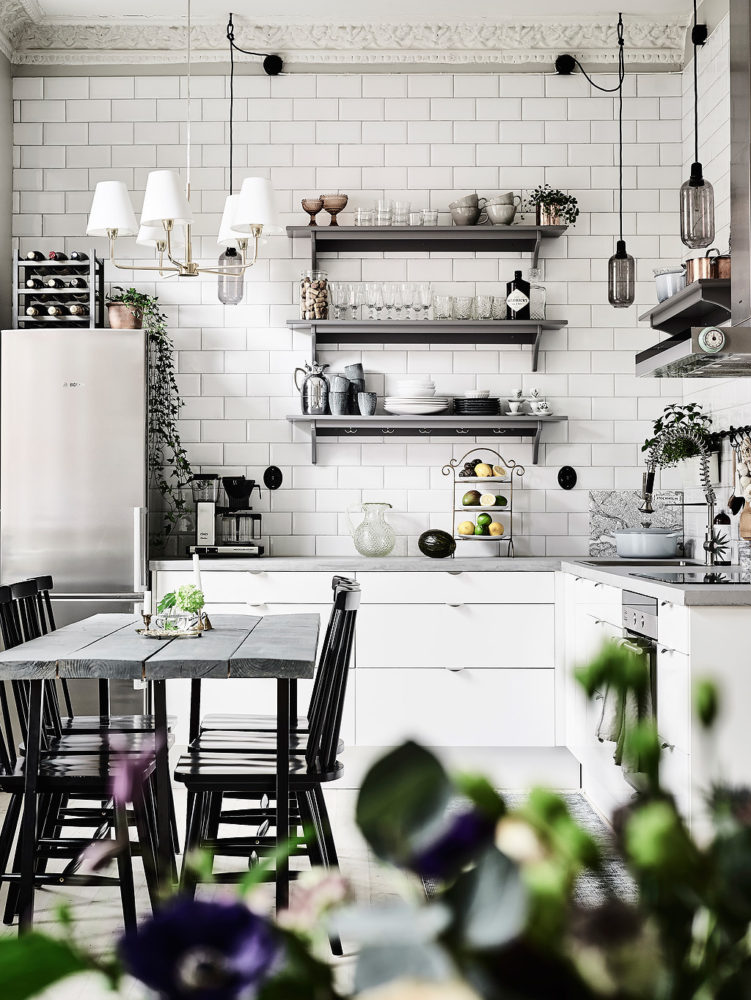 Oksana Tsymbalova, designer:— In his famous book “The Art of Colour”, which has become a reference book for designers all over the world, Johannes Itten wrote that “the eye and brain require medium grey, otherwise, in its absence, they lose their peace”, and “medium grey corresponds to the state of balance required by our vision”. That is why we use grey so often in interior design — it brings harmony and comfort to our lives. Grey goes perfectly with white and black, creating a neutral monochrome interior. This combination is widely used in Scandinavian interiors or in the minimalist style, where balance and calm are valued above all else. To add “liveliness” to a monochrome interior, I advise combining it with natural textures: wood, rattan, stone, sea pebbles, fur, natural fabrics. Grey + emerald The main advantage of grey is its nobility with overall neutrality. You can paint all the walls in it or choose just one gray item, it will look chic in any case. But green can emphasize elegance and add depth to the palette, especially its rich emerald shade. Use it as an accent on a gray background and combine it with cold metals, mirrored surfaces and a contrasting black and white ensemble.
Oksana Tsymbalova, designer:— In his famous book “The Art of Colour”, which has become a reference book for designers all over the world, Johannes Itten wrote that “the eye and brain require medium grey, otherwise, in its absence, they lose their peace”, and “medium grey corresponds to the state of balance required by our vision”. That is why we use grey so often in interior design — it brings harmony and comfort to our lives. Grey goes perfectly with white and black, creating a neutral monochrome interior. This combination is widely used in Scandinavian interiors or in the minimalist style, where balance and calm are valued above all else. To add “liveliness” to a monochrome interior, I advise combining it with natural textures: wood, rattan, stone, sea pebbles, fur, natural fabrics. Grey + emerald The main advantage of grey is its nobility with overall neutrality. You can paint all the walls in it or choose just one gray item, it will look chic in any case. But green can emphasize elegance and add depth to the palette, especially its rich emerald shade. Use it as an accent on a gray background and combine it with cold metals, mirrored surfaces and a contrasting black and white ensemble.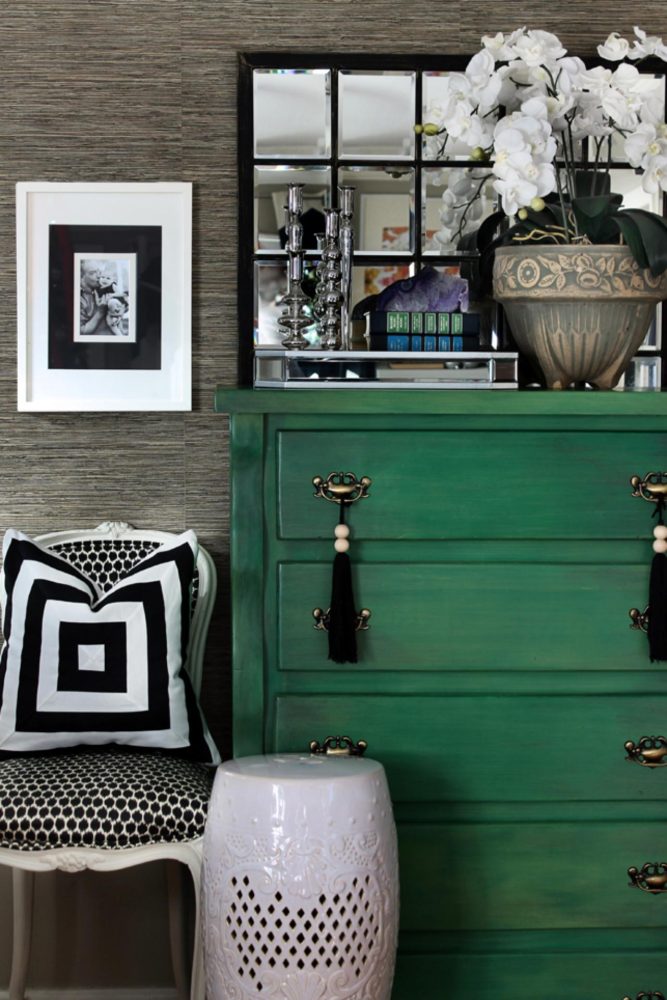 Burgundy + shades of white Few people canresist the burgundy color, but also few dare to introduce it into the interior, especially in large volumes. However, if you balance this active color with white, gray or pastel shades of white, you will get a very feminine, unusual and slightly mysterious combination, which will not tire the eyes. Stepan Bugayev, interior designer: - Light colors add light and space to the room. They perfectly cope with the role of the main color in any room and any style. White and its derivative shades will serve as an excellent canvas on which, with the help of bright furniture and decor, you can create a unique picture of your interior. In addition, white goes well with any other colors. With its help, you can design a bright interior, using fairly simple decorating techniques.
Burgundy + shades of white Few people canresist the burgundy color, but also few dare to introduce it into the interior, especially in large volumes. However, if you balance this active color with white, gray or pastel shades of white, you will get a very feminine, unusual and slightly mysterious combination, which will not tire the eyes. Stepan Bugayev, interior designer: - Light colors add light and space to the room. They perfectly cope with the role of the main color in any room and any style. White and its derivative shades will serve as an excellent canvas on which, with the help of bright furniture and decor, you can create a unique picture of your interior. In addition, white goes well with any other colors. With its help, you can design a bright interior, using fairly simple decorating techniques.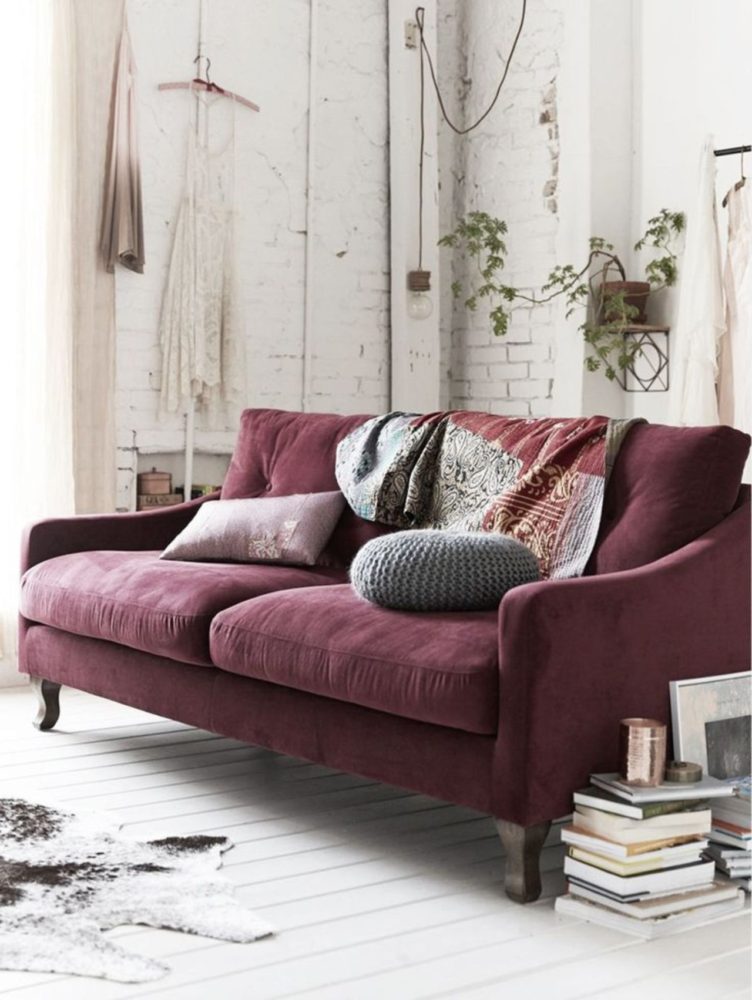 Cobalt + turquoise Combination of severalshades of the same color are no longer surprising, but what if we are talking about active and bright tones? Not everyone will dare to combine turquoise and cobalt in one interior: both shades are self-sufficient and very saturated. However, you should not be afraid of them: if you are not a fan of bright colors, you can use cobalt and turquoise either as small accents or in a muted version. This combination should definitely be diluted with an airy and refreshing white color. Anna Chevereva, designer: - A combination suitable for any room, if you are a fan of emotional, rich interiors. Looks good in a combination of patterns and textures, as well as with gold and brass. If you want to use this combination for a child's room or bedroom, you should soften its saturation and dilute it with neutral colors - white or beige. www.zi-design.ru
Cobalt + turquoise Combination of severalshades of the same color are no longer surprising, but what if we are talking about active and bright tones? Not everyone will dare to combine turquoise and cobalt in one interior: both shades are self-sufficient and very saturated. However, you should not be afraid of them: if you are not a fan of bright colors, you can use cobalt and turquoise either as small accents or in a muted version. This combination should definitely be diluted with an airy and refreshing white color. Anna Chevereva, designer: - A combination suitable for any room, if you are a fan of emotional, rich interiors. Looks good in a combination of patterns and textures, as well as with gold and brass. If you want to use this combination for a child's room or bedroom, you should soften its saturation and dilute it with neutral colors - white or beige. www.zi-design.ru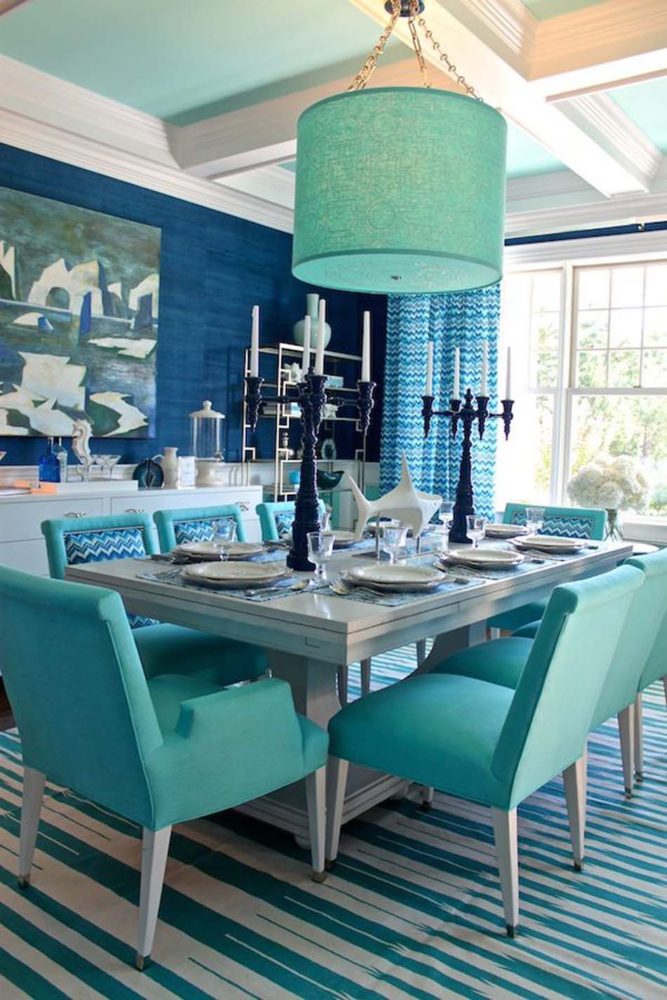 Chartreuse + Lavender Chartreuse - Yellow-Greena color that got its name from the French liqueur of the same name. It is unique in that it is best recognized by the brain's receptors and, thanks to this, is the most noticeable shade for a person. In the interior, chartreuse, which psychologists use as a calming color, is perfect for private spaces, and with lavender it forms an interesting and cozy combination, reminiscent of the Provencal fields.
Chartreuse + Lavender Chartreuse - Yellow-Greena color that got its name from the French liqueur of the same name. It is unique in that it is best recognized by the brain's receptors and, thanks to this, is the most noticeable shade for a person. In the interior, chartreuse, which psychologists use as a calming color, is perfect for private spaces, and with lavender it forms an interesting and cozy combination, reminiscent of the Provencal fields.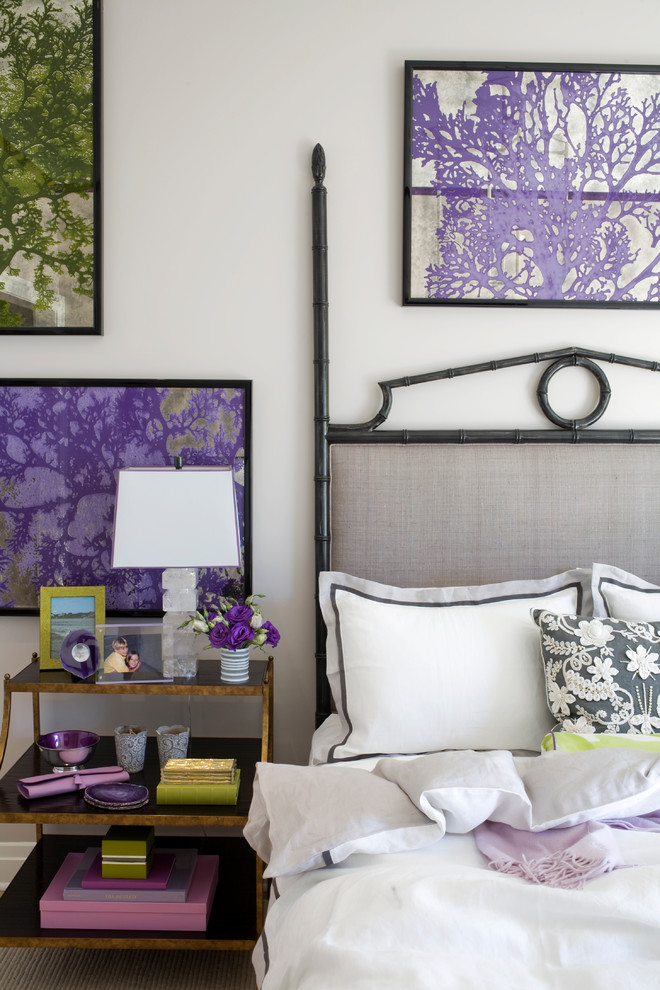 Anton Elistratov, Manders:— The famous English paints Farrow&Ball are known not only for their quality, but also for their amazing color combinations and names. Thus, in the anniversary collection dedicated to the 70th anniversary of the company, you can find a combination of blue-green (Vardo) and gray-blue (Inchyra Blue) colors. Gypsy vardo is a special type of mobile home, the decoration of which was considered the most important aspect of the culture of this people. The rich blue-green color goes well with red and dark gray shades. And the vintage gray-blue shade Inchyra Blue owes its name to the village of Inchyra, where it was first used in a classic house in the era of King George, so that the interior colors would harmonize with the changeable weather of Scotland.
Anton Elistratov, Manders:— The famous English paints Farrow&Ball are known not only for their quality, but also for their amazing color combinations and names. Thus, in the anniversary collection dedicated to the 70th anniversary of the company, you can find a combination of blue-green (Vardo) and gray-blue (Inchyra Blue) colors. Gypsy vardo is a special type of mobile home, the decoration of which was considered the most important aspect of the culture of this people. The rich blue-green color goes well with red and dark gray shades. And the vintage gray-blue shade Inchyra Blue owes its name to the village of Inchyra, where it was first used in a classic house in the era of King George, so that the interior colors would harmonize with the changeable weather of Scotland.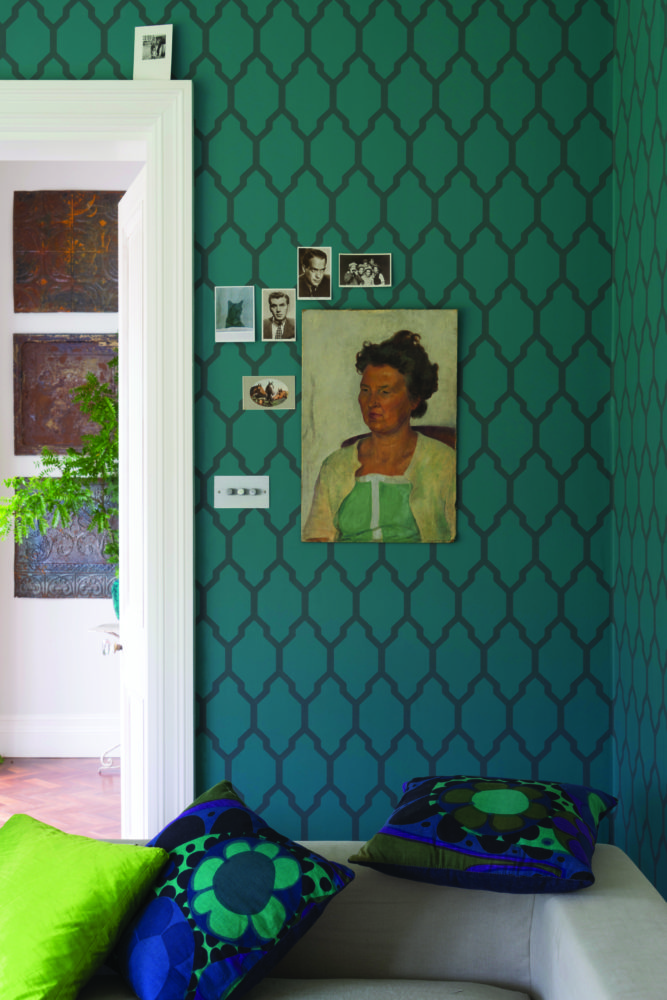
7 Unexpected Color Combinations You'll Want to Try – etk-fashion.com

